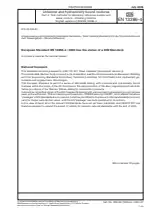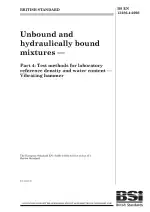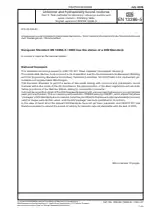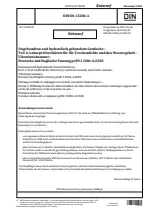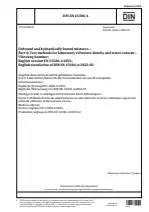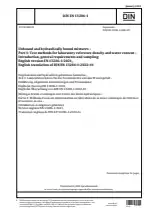Unbound and Hydraulically Bound Mixtures - Part 4: Test Methods for Laboratory Reference Density and Water Content; Vibrating Hammer
Also Known As:
The DIN EN 13286-4 standard sets out the procedure for determining the relationship between the dry density and moisture content of a mixture. This method specifically involves compacting the mixture using a vibrating hammer.
The standard applies to mixtures used in road construction, provided that they do not contain more than 30% by mass retained on the 20 mm test sieve. It is important to note that this standard is part of a series of standards that cover various aspects of unbound and hydraulically bound mixtures.
By determining the relationship between dry density and moisture content, this standard helps ensure the quality and performance of mixtures used in road construction. It provides a reliable and standardized method for testing and evaluating the compaction characteristics of these mixtures, which is crucial for achieving the desired engineering properties and durability of road infrastructure.
| Descriptors | Bound, Building materials, Compacting, Compacting equipment, Conglomerates, Construction, Construction materials, Definitions, Densimetry, Density, Determination, Determination of content, Dry density, Grain sizing, Hammers, Hydraulic, Laboratory testing, Mathematical calculations, Measurement, Mineral aggregates, Mixtures, Particulate materials, Pavements (roads), Road construction, Rocks, Size ranges, Specification (approval), Specimen preparation, Testing, Testing conditions, Unbound, Vibrated density, Vibration, Water, Water content, Sample preparation |
| ICS Codes | 93.080.20 - Road construction materials |
| Language(s) | English |
| File Size | 1.4 MB |

